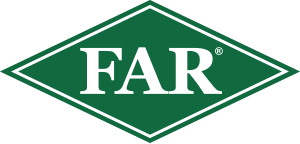The Seed Rate calculation uses several variables to give an accurate answer for suggested sowing rates.
To use the calculation you will need to know the following:
- the plant population you want to establish for your crop,
- the thousand grain weight of the seed,
- the germination percentage (%) of the seed,
- the expected crop emergence – this is determined by time of sowing, seed quality and management factors (e.g. seed treatment, sowing depth, seed-bed quality).
The steps to follow are:
Thousand grain weight
If using certified seed, the value for thousand grain weight (TGW) should be available on the seed bag or on request. If you need to calculate it for yourself, the number of seeds you will need to count will depend on the accuracy of your scales. Make sure your seed sample is representative of the whole line.
i. If you have scales that will weigh to 0.1g, count 200 seeds, weigh them and multiply the weight by 5 to get thousand grain weight
ii. If not, count and weigh 1000 seeds.
Germination percentage (%)
This should also be on the bag label or on request. A purity & germination (P&G) test figure is usually quoted. Germination tests determine the maximum germination potential of a given seed line. Under certain conditions in the field it is often noted by producers that the laboratory germination result overestimates seedling emergence. Although there are many factors that may influence the final plant population, the observed differences are also a result of the physiological quality of a particular seed line and its tolerance to stress. Caution is advised as the germination figure does not equate to the percentage of seeds expected to emerge in the field.
Emergence percentage (%)
Emergence percentage is an estimate based on actual emergence in the field. Further information can be gained from 'stress tests' and 'vigour tests'. These test results are not usually available but should hopefully be on request. Experience certainly helps when deciding on this figure.
Examples of emergence % could be:
- April sown: 90% emergence (assumes warm, moist conditions)
- May sown: 85% emergence
- June sown: 80% emergence
- July sown: 75% emergence (assumes maybe poorer quality seedbed, sown too deep, cold soil conditions).
- Sowing rate (kg/ha) = target plant population (p/m2) x TGW (g) x 100
- % germination x % emergence
Examples:
- Autumn wheat Spring barley
- A wheat sample TGW = 45g A barley sample TGW = 40g
- B % germination = 95% B % germination = 90%
- C % emergence = 90% C % emergence = 85%
- D target plant population = 125pl/m2 D target plant population = 225pl/m2
- E required sowing rate is 66kg/ha E required sowing rate is 118kg/ha
- The calculation can be transformed to determine the actual emergence % achieved (useful if poor establishment):
- % emergence = actual plant population (p/m2) x TGW (g) x 100
- sowing rate (kg/ha) x % germination
The actual plant population needs to be counted in the field (rod or quadrat methods) for the above calculation, whilst TGW, sowing rate and germination % are figures that were known at drilling.
Issues for successful establishment (in no particular order)
Seedbed: A trashy seedbed may reduce seed/soil contact, thereby reducing germination, while a compacted seedbed may restrict emergence. A seedbed with large clods may also force emerging seedlings to become deformed (and therefore weakened) in their attempt to emerge.
Sowing depth: Sown too shallow, seed may be subject to bird damage and susceptible to drying out. If sown too deep, young plants will struggle to emerge and may be weak and therefore prone to disease or may become deformed. Check that your drill is placing seed at its optimum depth.
Nutrition and moisture: Plant roots follow the easiest path for growth, so nutrition should be placed near the roots. Some fertilisers will, however, “burn" seedlings, so they must be placed out of direct contact with the seed. Moisture is essential for seed germination. Once germinated, the young seedling is also very fragile and may dry out rapidly if there is insufficient moisture in the root zone. Too much moisture (waterlogging) will mean oxygen starvation, which will lead to germination failure or seedling death.
Weeds, diseases and pests: Weeds will compete with the crop for light, moisture and nutrients. Weeds may potentially be more of a problem in thinly sown (or poorly established) crops. The main disease problem for emerging seedlings is fungi affecting the new roots, but these are more likely to occur in a cool, damp environment, when seedlings are less vigorous and therefore more prone to attack. Seed treatment with fungicides may be beneficial if seed-borne diseases are a concern, but these treatments may also delay crop emergence. A wide range of pests can cause problems - slugs, weevils, grass grubs, etc. If these are present, control options need to be evaluated.
Time of sowing: Crops sown in the early autumn or late spring, when soil temperatures are warm and moisture is (hopefully) ideal, should mean rapid germination and a high emergence rate of seedlings. The autumn sown crops will also have more opportunity to tiller, so sowing rates will need to take this into account.
Sowing Rates in general for autumn sowings
Note: for most recent trial results relating to sowing rates for autumn sown wheat, see FAR Arable Updates Cereals Nos. 60, 85 & 100.
Generally, establishment targets are:
- April 100 plants/m2
- May 100-150 plants/m2
- June 200 plants/m2
Usually there is no real advantage of sowing more than 200 plants/m2.

